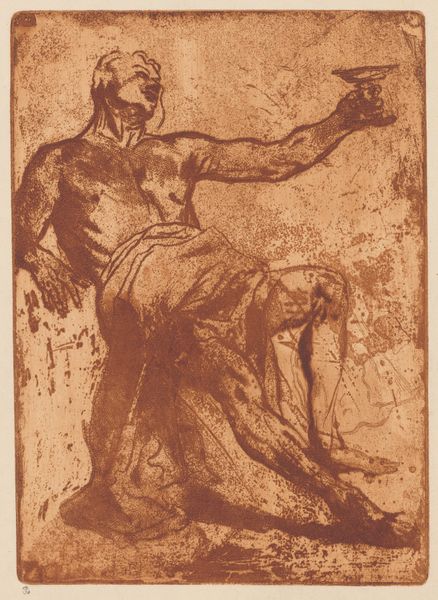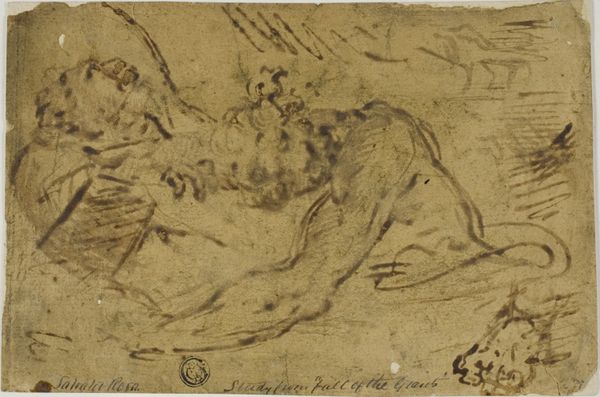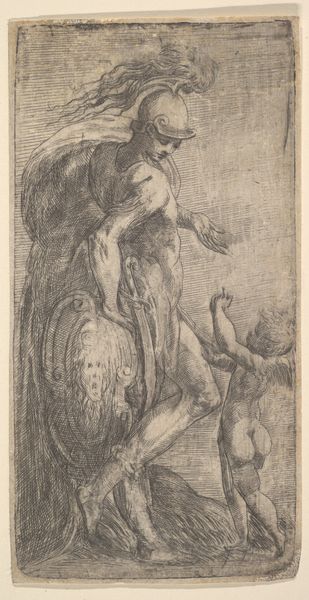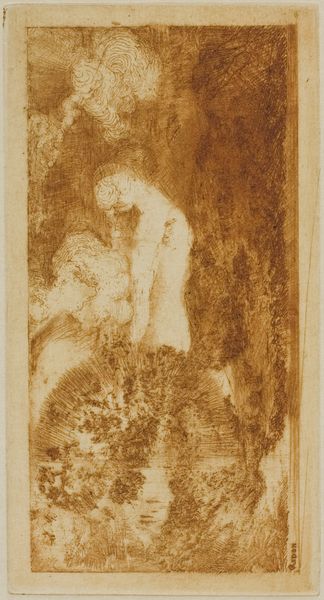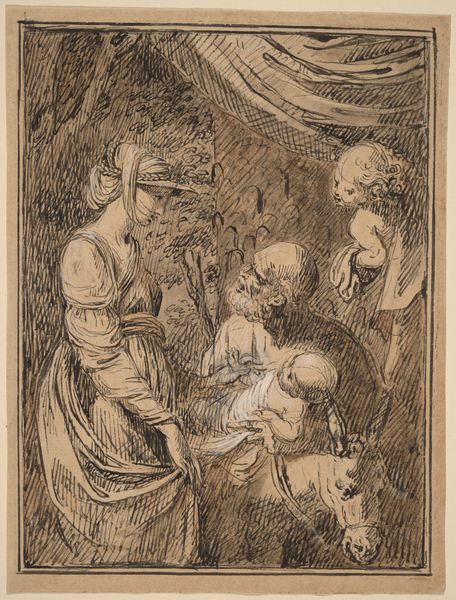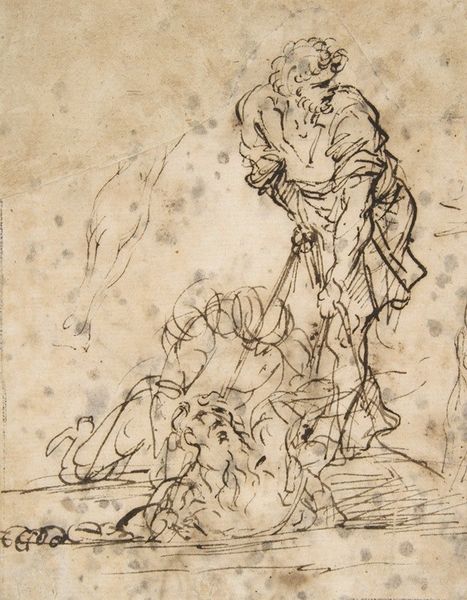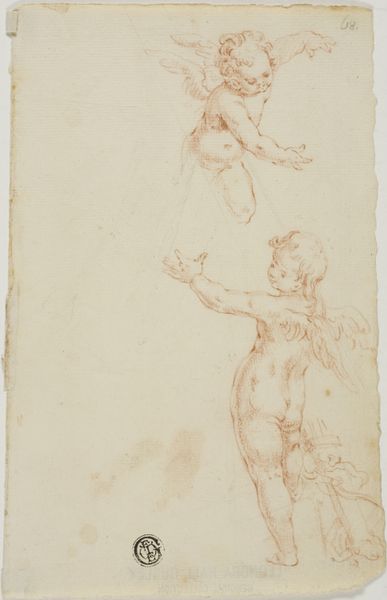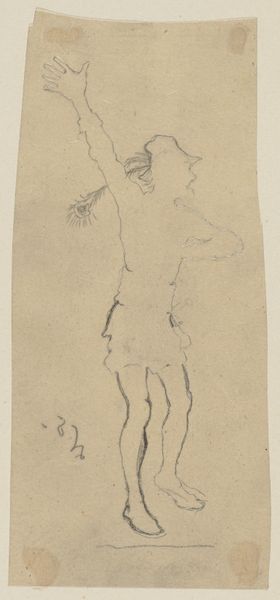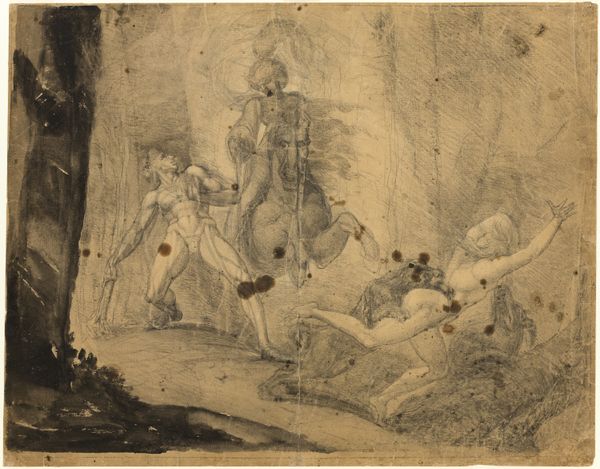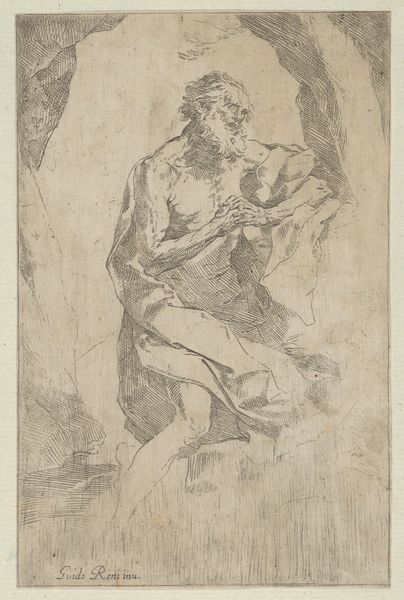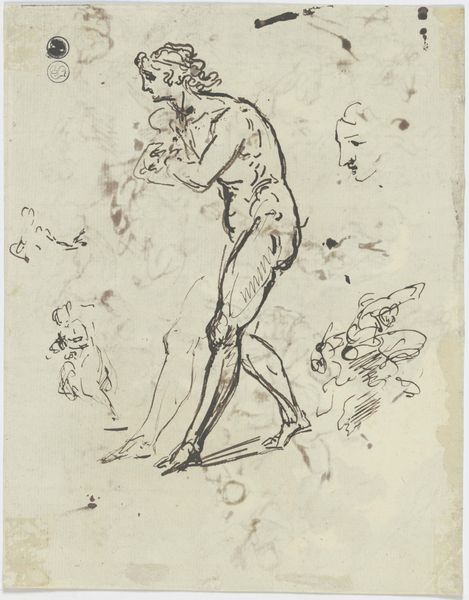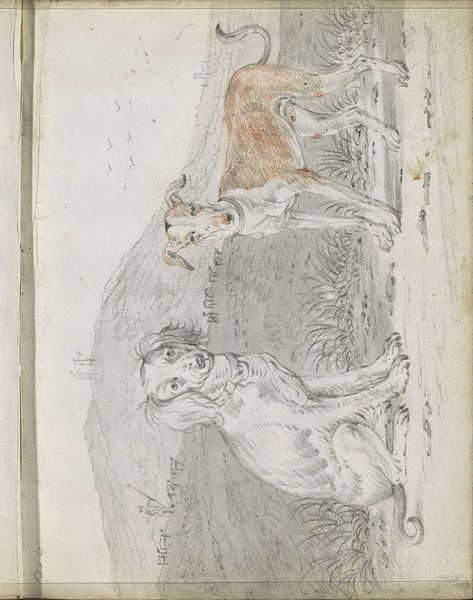
A man looks down at an infant lying on the ground; above there is a head study 1660s
0:00
0:00
drawing, ink, chalk, pen
#
portrait
#
drawing
#
baroque
#
figuration
#
ink
#
pencil drawing
#
chalk
#
pen
#
history-painting
Copyright: Public Domain
Editor: We're looking at "A man looks down at an infant lying on the ground; above there is a head study," a drawing from the 1660s by Salvator Rosa, using pen, chalk, and ink. It's currently held at the Städel Museum. There's something almost theatrical about the composition. What do you see in this piece? Curator: Immediately, I see a complex interplay of power and vulnerability being staged. Rosa's historical context is crucial here – a 17th-century society grappling with social hierarchies, religious doctrine, and emerging humanist ideals. Look at the figure looming over the infant. Who does he represent? Authority? Judgment? Consider the very real precarity of infancy in that period, the high mortality rates and social disregard. Is Rosa critiquing indifference? Editor: I hadn't considered the high infant mortality rate then. That adds another layer of meaning. What about the different head studies? Curator: They function almost like witnesses, or perhaps different aspects of the same figure. It could signify internal conflict, different perspectives on the same crisis. Rosa often used dramatic gestures in his works. In terms of power, how might a feminist perspective alter our interpretation of the male figure's dominance in relation to the infant's vulnerability? Does the composition suggest societal power structures at play? Editor: Definitely. Seeing it through that lens makes me wonder about societal expectations and perhaps the neglect of the most vulnerable members of society. It really seems to show multiple readings depending on what context we prioritize. Curator: Precisely. And understanding those contexts – the social, political, philosophical currents of the time – allows us to have a richer, more nuanced dialogue with the artwork and its continued resonance today.
Comments
No comments
Be the first to comment and join the conversation on the ultimate creative platform.
